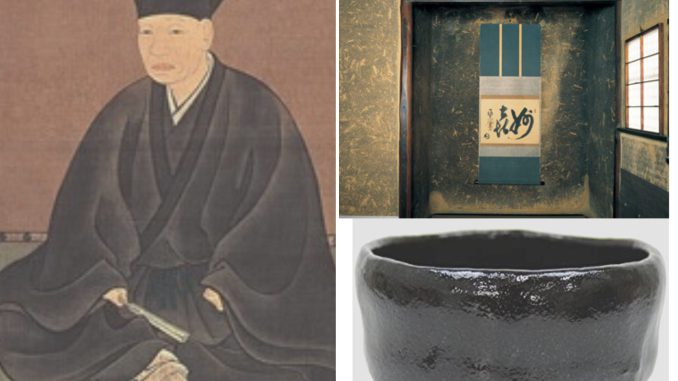
茶道【SADOU】”The way of Tea” was born from 禅【ZEN】monk’s philosophical culture and it had completed by the great tea master 千利休【SEN‐NO‐RIKYU】with many Samurais in 16Century’s battle age.
CONTENTS:
1.History of 茶【CHA/tea】.Tea was drunk as medicine to awake and shape their spirits in rituals by noble people and monks.
2.What’s 侘び寂び【WABI-SABI】?The most famous tea master 千利休【SEN NO RIKYUU】had established and completed the 侘び茶【WABI-CHA】Wabi way of tea.
3.Nowadays, there are more than 50 sects of 茶道【SADOU】.It was born from monks and Samurai leaders, then inherited by plutocrats or elites, to common peoples most of women.
1.History of 茶【CHA/tea】.Tea was drunk as medicine to awake and shape their spirits in rituals by noble people and monks.
The custom of drinking 茶【CHA(tea)】was imported by ancient China called 宋【SOU】about 1300 years ago. Japan was around the beginning of 平安時代【HEIAN period(794-1185)】and tea leaves were brought by monks as exchanged students. At that time, tea was drunk as medicine only in temples to awake and shape their spirits in rituals and taken only among monks and noble aristocrats including emperors in royal coat.
In the age of 鎌倉時代【KAMAKURA-period(1185-1333)】about 700 years ago, tea leaf’s domestic plant has been started by a monk 栄西【EISAI】 in 京都【KYOUTO】.
There is a description that a 将軍【SHOUGUN】in 鎌倉【KAMAKURA(1185-1333)】age drunk tea as a medicine of hangover.🍶🍵
2.What’s 侘び寂び【WABI-SABI】?And The most famous tea master千利休【SEN NO RIKYUU】.
When it comes to 戦国時代【SENGOKU-JIDAI(Battle Ages/1467‐1615)】 about 400-500 years ago,
many 戦国武将【SENGOKU-BUSYOU(Samurai Leaders/domestic loads of worriers)】 often hold large, gorgeous Tea Parties. The early times of tea culture was like a flashy and noisy “gamble” betting very expensive 唐【TOU/KARA】(Ancient name of China ) and 高麗【KOURAI】(country placed in Korean now ) tea utilities and it was called 闘茶【TOUCHA(Tea-Battle)】.
Many Samurais addicted to correcting very expensive foreign tea tools(at that age, sometimes one tea bowl worth one castle!).
Famous ones were 織田信長【ODA-NOBUNAGA】, 豊臣秀吉【TOYOTOMI-HIDEYOSHI】and 伊達政宗【DATE-MASAMUNE】, 細川忠興【HOSOKAWA-TADAOKI】、古田織部【FURUTA-ORIBE】,金森宗和【KANAMORI-SOUWA】and more.
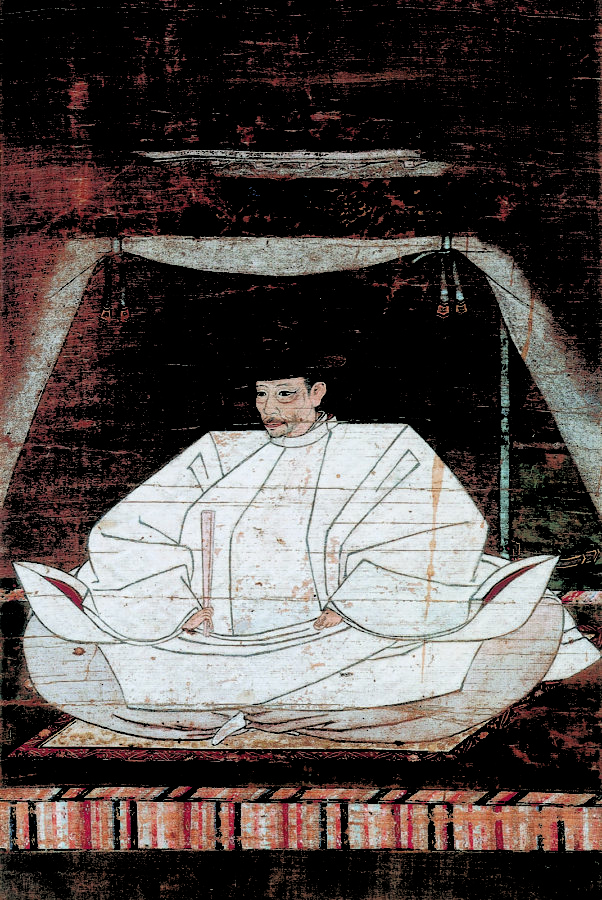
侘び寂び【WABI-SABI】VS gorgeous Golden Culture…2 different type of cultures were in the fashion at the same time at that age.
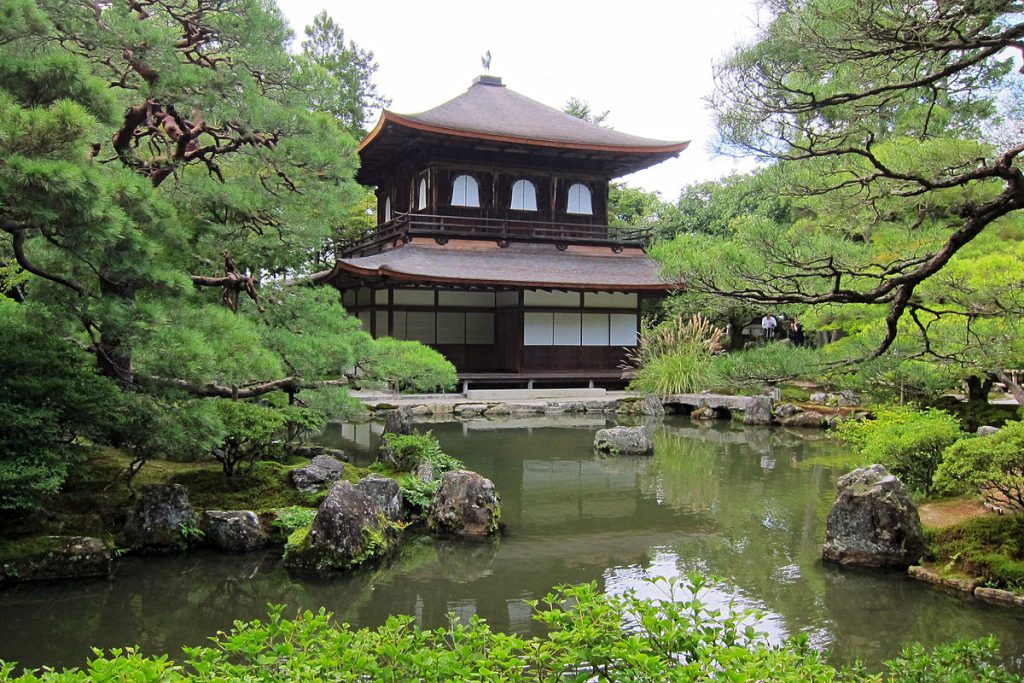
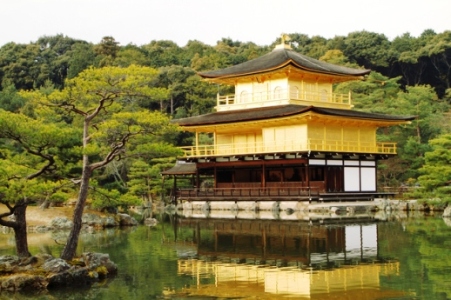
A ZEN monk from 大徳寺【DAITOKUJI-TEMPLE】村田珠光【MURATA-JYUKOU】, he was an aide monk of the8th.将軍【SHOUGUN(A leader of all Samurais/literally mean General)】足利義政【ASHIKAGA-YOSHIMASA】who made very chick 銀閣寺【GINKAKU-JI( Silver Temple)】temple while 3th.SHOUGUN 義光【YOSHIMITSU】made shining golden 金閣寺【KINKAKU-JI(Golden Temple)】temple.
珠光【JYUKOU】also advised YOSHIMASA to prohibit the gambling Tea battle called 闘茶【TOUCHA】. Yea, at that age, 茶会【CHAKAI(Tea Party)】was drinking not only Tea but SAKE(alcohol) with many dishes, and it was kind of gamble to guess the promotion place of Tea, betting very expensive tea utilities from abroad.
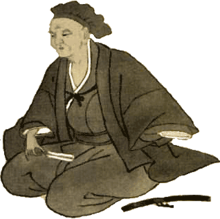
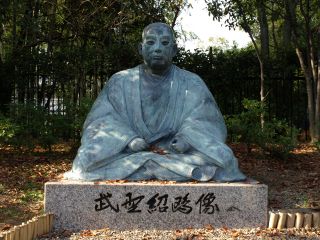
he put forward more simple, calm and emphasized spiritual Tea style, according to the value of 禅【ZEN】 Buddhism.
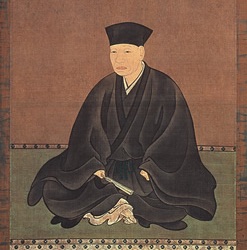
村田珠光【MURATA JYUKOU】’s style was followed by 武野紹鴎【TAKENO-JYOUOU】, and the most famous Tea Master 千利休【SEN NO RIKYUU】 became a teacher of Tea for 豊臣秀吉【TOYOTOMI HIDEYOSHI】, the ruler of that age.
These tea peoples proposed to leave from foreign ways of values and created Japanese original values like 侘び寂び【WABI-SABI】;literally means ” Rusting and Tranquility” things which are not gorgeous, simple and imperfect and rusting things with ages”.
It became very important Japanese aesthetic sensibilities, which prefer beauty come from simplicity and imperfection, or serenity or tranquility that come with age.
It is said that the mind of WABI-SABI is appeared in this old poem made by 藤原定家【FUJIWARA-TEIKA】 (From 万葉集【MANYOU-SYUU】poem anthology of 平安【HEIAN】period).
Overviewing,
No Flowers nor No red leaves anymore
Only Poor hut on the Beach in Autumn’s Dusk.

They preferred imperfect, missing things instead of perfect, gorgeous thigs and this value become very important in SADOU. He created original Japanese tea bowls called 黒楽【KURO-RAKU】and 赤楽【AKA-RAKU】, used hand-made bamboo scoops,

and made very small, simple tea room like 待庵【TAI-AN】while the ruler of that time 豊臣秀吉【TOYOTOMI-HIDEYOSHI】 made a golden, brilliant tea room. It is said that there were conflict about their aesthetic sense.
The most decisive event was, when Hideyoshi started to conquer 朝鮮【CHOSEN】Peninsura, Rikyuu tried to stop it. There were some historical reasons for the conquest though, one of them is to earn high quality potteries.
Rikyuu made 長次郎【CHOUJIROU】domestic potter, make domestic pottery named 黒楽【KURO-RAKU】Black “Raku(Enjoy and relax)” and 赤楽【AKA-RAKU】Red Raku.
They are made from the clay of Hideyoshi’s castles footage.
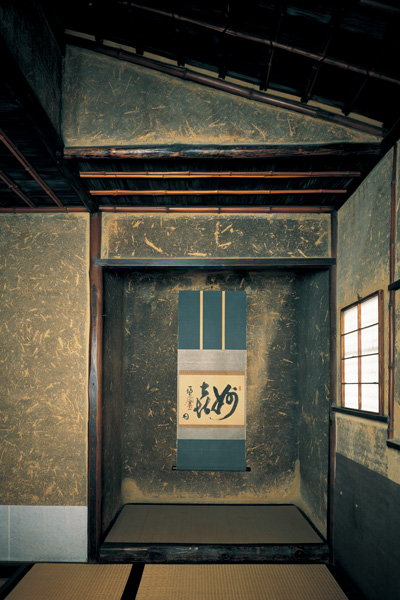


Why 千利休【SENNNO-RIKYUU】made 切腹【SEPPUKU( suicide by cutting own stomach 】by豊臣秀吉【TOYOTOMI-HIDEYOSHI】?
Finally, 豊臣秀吉【TOYOTOMI-HIDEYOSHI】 compelled 千利休 to cut his stomach 切腹【SEPPUKU/HARAKIRI】 by himself. And the reason is still mystery in Japan, even there are many theories.
That is the not want too much, unperfect simple things are enough, seek beauties and satisfy with what we have already. If we want gorgeous, perfect things, we can not satisfied forever. If we can love only perfect things, it is difficult to love in this world. If we can love unperfect thigs we already have, there are a lot of things to be loved in this world. And we can satisfy with which we already have, needless to conquest other countries.
I think it had been very important theme in this country from the ancient time.
ESSAY: 「The sense of values in Japan in each ages :もののあはれ【MONONO-AHARE】in 平安【HEIAN】 period, 幽玄【YUUGEN】in 室町【Muromachi】,粋【IKI】in EDO…and Now is かわいい【KAWAII】!」<COMING SOON>
After a country unified by 徳川家康【TOKUGAWA IEYASU】, SADOU become popular among common people too, in the peaceful era called 江戸【EDO】period.
3.Nowadays,茶道【SADOU】is inherited and there are more than 500 sects nowadays.

After modernization, from the end of 江戸【EDO】to 明治【MEIJI-ERA(1868-1912)】,peoples of conglomerates called 財閥【ZAIBATSU】aesthetic eyes collect utilities like 益田鈍翁【MASUDA-DONOU(1848‐1938)】.
And after W.W.2, it become practices of manners and trains for women to be good brides. So nowadays, an image of SADOU is women’s culture and there are many women over certain age are trained and enjoying 茶道【SADOU】 as one of cultural educations in Japan.
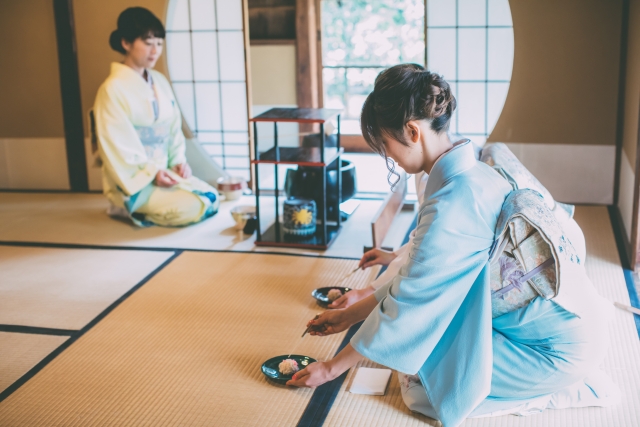
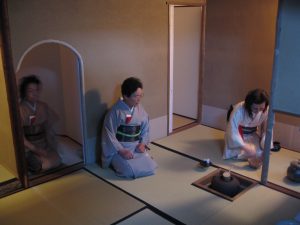
SAMURAI leaders,財閥【ZAIBATSU】,and women ー 茶道【SADOU】had been the culture always for executive, cutting-age-people!
In addition to that, I’m thinking that 茶道【SADOU】 might be important source as sightseeing experience for foreigners from now♪

Leave a Reply